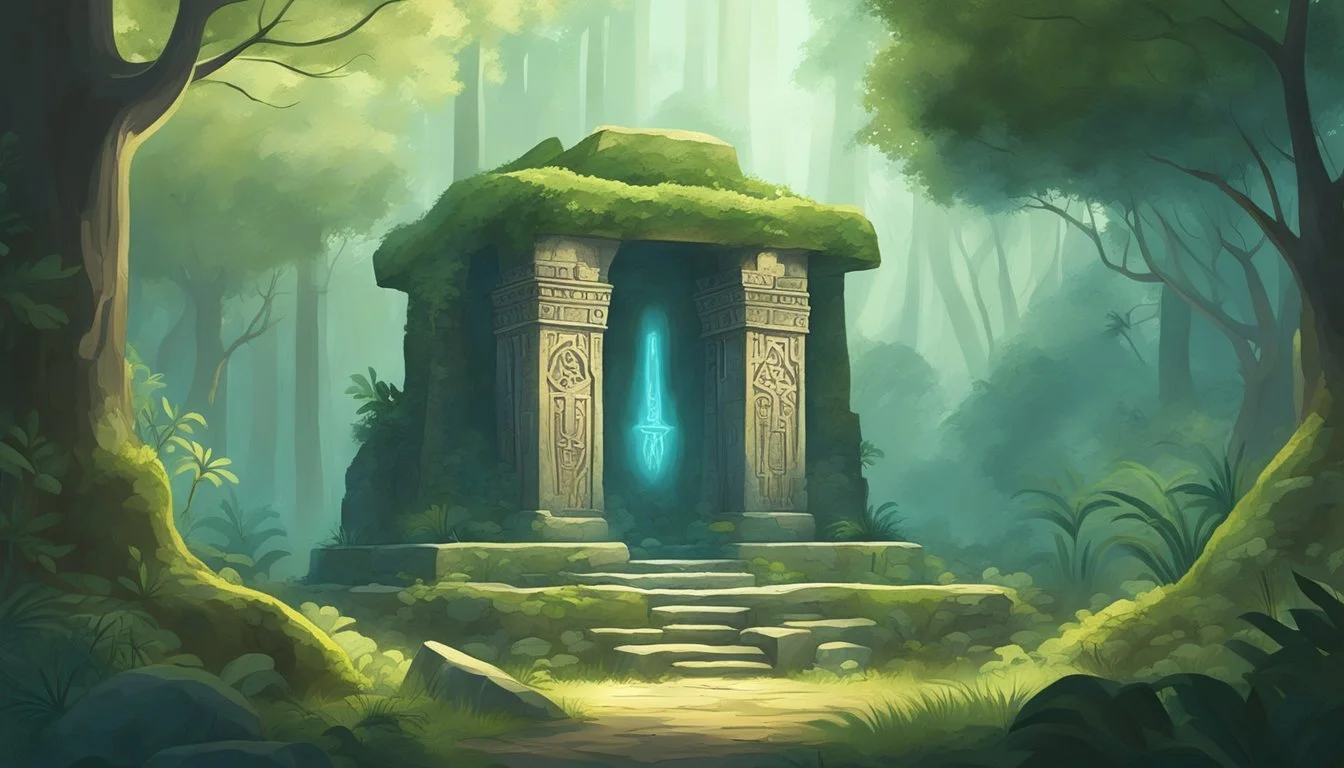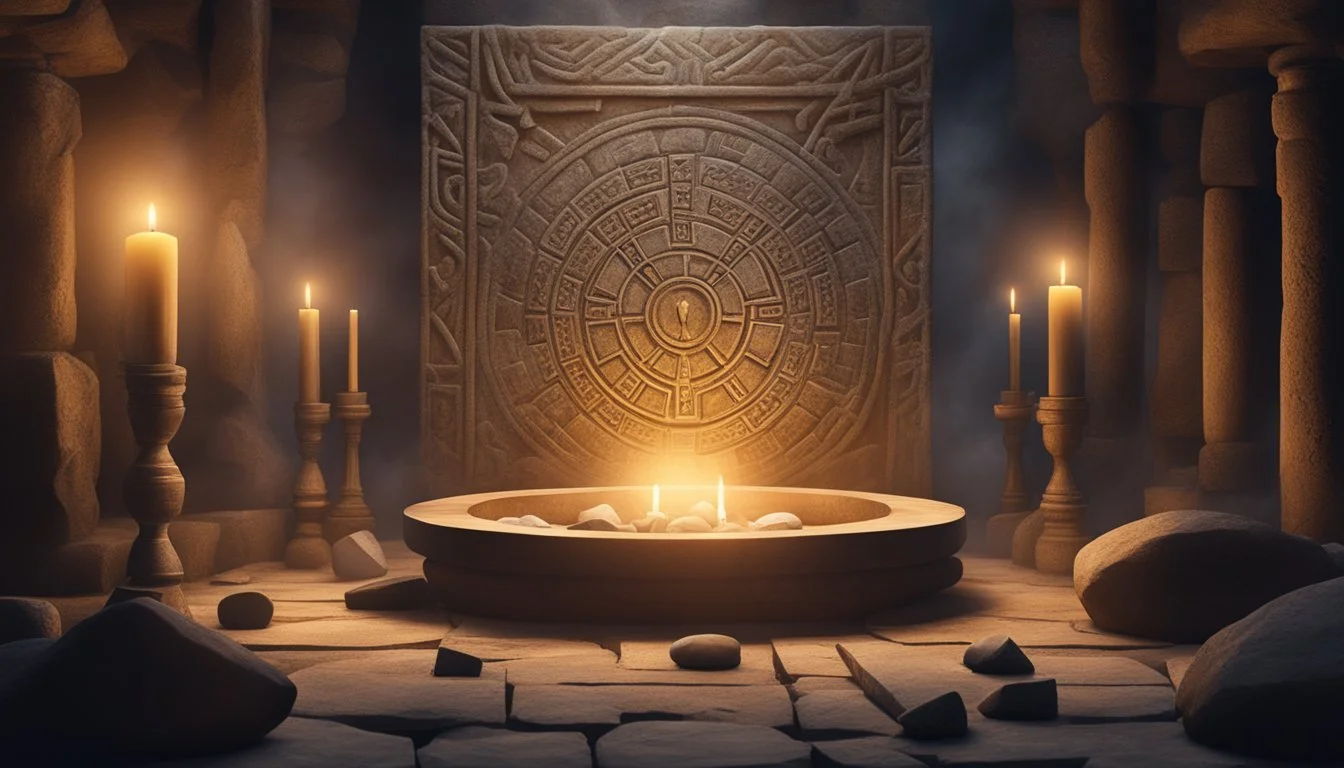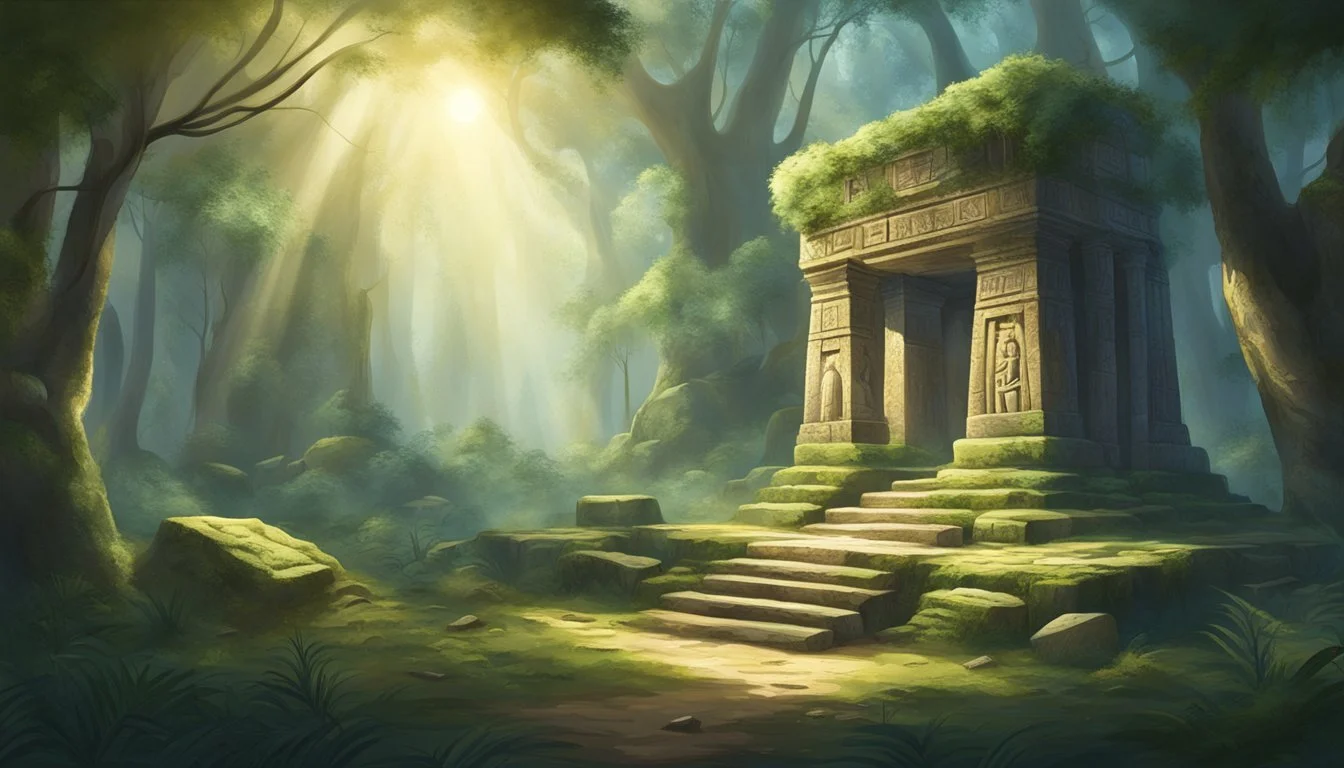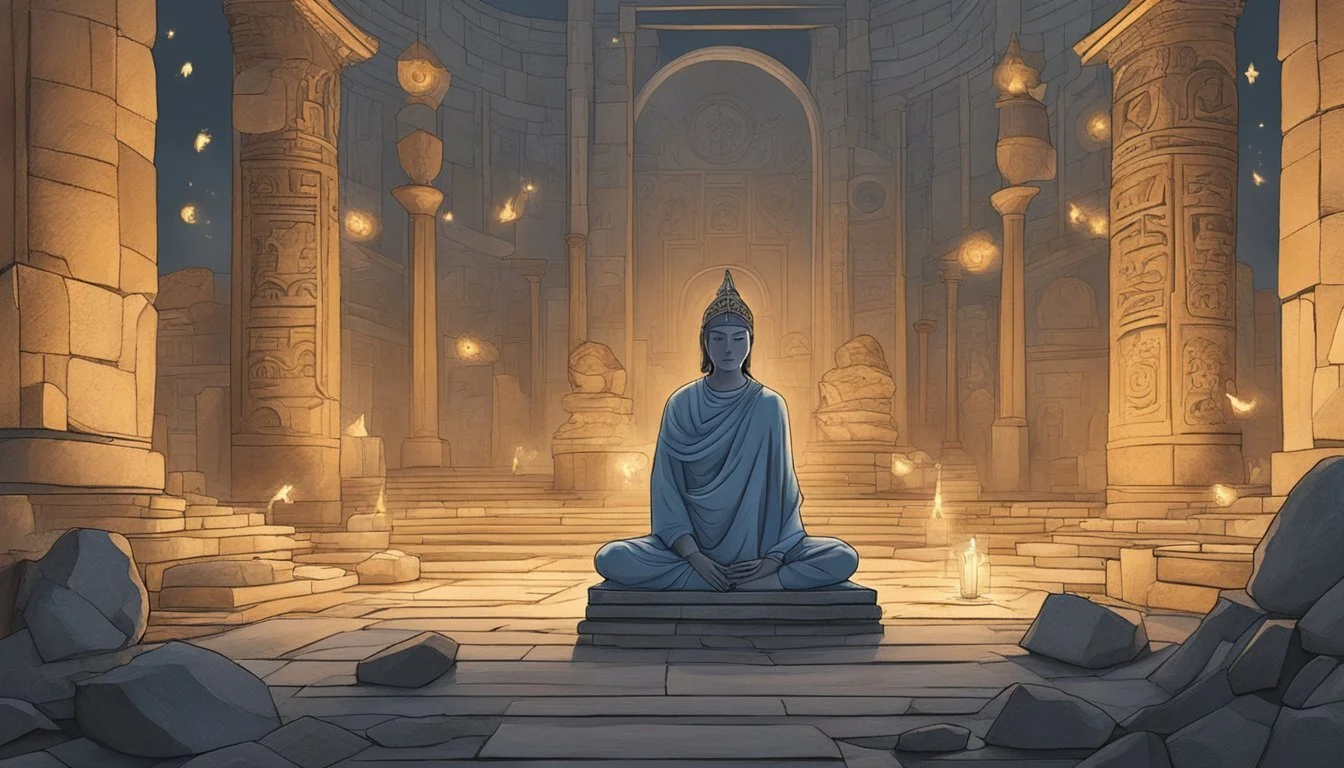5 Forgotten Spiritual Practices from Lost Civilizations
Ancient Wisdom Rediscovered
Throughout history, numerous civilizations have developed unique spiritual practices that have been lost to time. These forgotten rituals and beliefs offer fascinating glimpses into ancient cultures and their understanding of the metaphysical world. By exploring these practices, we can gain valuable insights into the diverse ways humans have sought to connect with the divine and find meaning in existence.
Uncovering lost spiritual traditions reveals the rich tapestry of human spirituality and the universal human quest for transcendence. From ancient Mesopotamian divination techniques to esoteric Gnostic pathways, these forgotten practices showcase the ingenuity and creativity of our ancestors in their pursuit of spiritual enlightenment. Examining these lost traditions can broaden our perspective on spirituality and deepen our appreciation for the diversity of human religious expression.
1) Chakra Balancing Rituals
Ancient civilizations recognized the importance of energy centers within the human body. These energy centers, known as chakras, were believed to influence physical, emotional, and spiritual well-being.
Chakra balancing rituals aimed to harmonize these energy points. Practitioners used various techniques, including meditation, yoga poses, and crystal healing, to align and unblock the seven main chakras.
Specific yoga poses were associated with each chakra. For example, the tree pose (Vrksasana) was thought to ground and stabilize the root chakra, promoting feelings of security.
Crystal healing played a significant role in chakra balancing. Different gemstones were assigned to each chakra based on their vibrational properties. Rose quartz was often used for the heart chakra, while amethyst was associated with the third eye chakra.
These ancient rituals also incorporated breathwork and visualization techniques. Practitioners would focus their attention on each chakra, imagining it as a spinning wheel of energy.
While modern science has yet to confirm the existence of chakras, many people still find these balancing rituals beneficial for relaxation and stress reduction.
2) Sufi Whirling Meditations
Sufi whirling is a mystical practice that originated in the 12th-13th century within the Mevlevi Order of Sufism. This unique form of active meditation involves spinning in circles as a means to achieve spiritual enlightenment and connect with the divine.
The practice, also known as Sema, is performed by Whirling Dervishes who spin with one hand pointed upward and the other downward. This symbolizes the connection between heaven and earth, with the practitioner acting as a conduit between the two realms.
During the whirling, practitioners aim to empty their minds and focus solely on the present moment. The continuous spinning motion is believed to induce a trance-like state, allowing participants to transcend their ego and experience a sense of unity with the universe.
Sufi whirling is not merely a dance but a profound spiritual exercise. It serves as a physical representation of the soul's journey towards enlightenment, with the circular motion mirroring the cyclical nature of existence.
While rooted in Islamic mysticism, Sufi whirling has gained recognition beyond religious boundaries. It is now practiced by people of various faiths and backgrounds as a form of moving meditation and spiritual exploration.
3) Norse Runes Divination
Norse runes were ancient symbols used for writing, magic, and divination in Scandinavian cultures. The practice of rune divination, or runecasting, involved casting inscribed stones or pieces of wood to gain insight into the future or seek guidance.
Each rune held a specific meaning and corresponded to different aspects of life, nature, and the cosmos. The Elder Futhark, the oldest runic alphabet, consisted of 24 runes divided into three groups called aetts.
Practitioners would typically cast the runes onto a white cloth or a prepared surface. The position and orientation of the runes were then interpreted to derive meaning and answers to questions.
Runes were believed to connect the physical and spiritual realms, allowing practitioners to tap into divine wisdom. This practice was often associated with Norse deities, particularly Odin, who was said to have discovered the runes through self-sacrifice.
Runecasting was not only used for prediction but also for self-reflection and personal growth. It provided a framework for individuals to explore their inner selves and make decisions based on ancient wisdom.
While the original practices of Norse rune divination have been largely lost to time, modern interpretations continue to captivate those seeking spiritual guidance and connection to ancient Norse traditions.
4) Ancient Greek Apotheosis
Apotheosis, the practice of elevating mortals to divine status, was a significant spiritual tradition in ancient Greek culture. This concept played a crucial role in Greek mythology and religious beliefs.
The Greeks believed that exceptional individuals could achieve godhood through their deeds or by divine decree. Heroes like Heracles and Asclepius were among those who underwent apotheosis, becoming full-fledged gods after their mortal lives ended.
Rulers and emperors also embraced this practice as a means of legitimizing their power. Alexander the Great, for instance, claimed divine parentage and encouraged his own worship as a god.
Apotheosis ceremonies often involved elaborate rituals and sacrifices. The deified individual would be honored with temples, statues, and offerings, much like the established gods of the Greek pantheon.
This spiritual practice reflected the Greek belief in the potential for human greatness and the blurred line between mortality and divinity. It provided a way for exceptional individuals to achieve immortality and continue influencing the mortal world after death.
5) Mayan Cenote Swimming Ritual
The ancient Maya viewed cenotes as sacred portals to the underworld. These natural sinkholes, formed by collapsed limestone caves, held deep spiritual significance in Mayan culture.
Cenote swimming rituals were performed to commune with the gods and ancestors. Participants would descend into the cool, crystal-clear waters, believing they were entering Xibalba, the Mayan realm of the dead.
Before swimming, individuals would purify themselves through fasting and prayer. They often adorned themselves with jade jewelry and other sacred ornaments.
Once in the cenote, swimmers would offer prayers and make sacrifices to the gods. Objects like pottery, jewelry, and even human remains have been found in cenotes, suggesting their use in religious ceremonies.
The ritual served multiple purposes. It was a way to honor the rain god Chaac and ensure bountiful harvests. Some used it as a form of divination, seeking visions or guidance from the spirit world.
For the Maya, these swimming rituals reinforced their connection to the natural world and the cosmic order. The cenotes were seen as life-giving sources, linking the earthly realm with the divine.
The Significance of Spiritual Practices
Spiritual practices have played a crucial role in human societies throughout history, shaping cultures and belief systems. These practices often served as a bridge between the physical and metaphysical realms, offering guidance and meaning to ancient civilizations.
Understanding Spirituality Across Cultures
Spirituality manifested differently across various cultures, reflecting unique worldviews and philosophies. Ancient Mesoamericans practiced Temazcal, a ritual for spiritual renewal and cleansing. This sacred ceremony took place in a "house of heat," symbolizing purification and rebirth.
In early Christian times, Gnostic traditions sought direct knowledge of the divine spark within. Gnosis, or inner knowing, challenged conventional religious dogma and offered an alternative path to spiritual enlightenment.
Scandinavian cultures used runes for divination, seeking insight into the future and guidance from higher powers. This practice exemplifies how spirituality often intertwined with daily decision-making and life choices.
The Role of Rituals and Traditions
Rituals and traditions formed the backbone of many spiritual practices, providing structure and continuity to belief systems. Ancient Romans performed animal sacrifices during ceremonies dedicated to their gods, examining the organs to predict future events.
The use of colorants in rituals dates back 500,000 to 310,000 years ago in southern Africa, suggesting the importance of symbolism and visual representation in spiritual practices. These early rituals likely served to strengthen social bonds and create a sense of shared identity.
Musical instruments, such as bone flutes found in Western Europe from 42,000 years ago, indicate the integration of art and spirituality. Music often played a vital role in religious ceremonies, helping to induce altered states of consciousness and facilitate spiritual experiences.
Ancient Meditation Techniques
Meditation practices have deep roots in ancient civilizations, with evidence dating back thousands of years. In Mesopotamia, clay seals depict figures in meditative postures, suggesting early forms of contemplative practices.
Ancient Indian traditions developed sophisticated meditation techniques. Vedic texts from around 1500 BCE describe methods for quieting the mind and achieving altered states of consciousness.
Chinese Taoist practices, emerging around 500 BCE, emphasized mindfulness and breathing exercises. These techniques aimed to cultivate inner peace and harmony with nature.
Egyptian spiritual traditions also incorporated meditative elements. Hieroglyphs and temple carvings suggest the use of focused concentration and visualization in religious rituals.
Ancient Greek philosophers explored meditation-like practices. Pythagoras advocated for self-reflection, while Plato encouraged contemplation of abstract ideas.
Some key ancient meditation techniques include:
Mantra repetition
Breath awareness
Visualization of deities or symbols
Body scanning
Contemplation of philosophical concepts
These practices were often integrated into religious or spiritual systems, serving as pathways to higher knowledge or divine connection.
Modern scientific research has begun to validate the benefits of these ancient techniques. Studies show meditation can reduce stress, improve focus, and enhance overall well-being.
The Use of Sacred Symbols and Art
Ancient civilizations used sacred symbols and art to connect with the divine and express spiritual concepts. These visual elements held deep meaning and played crucial roles in rituals and religious practices.
Meaning and Purpose of Sacred Symbols
Sacred symbols served as powerful tools for communication with the spiritual realm. They represented abstract ideas, deities, and cosmic principles in tangible forms. Egyptian hieroglyphs, for example, conveyed complex religious concepts through intricate pictorial writing.
Many symbols were believed to possess inherent power. The ankh, symbolizing life and immortality, was thought to bestow divine protection when worn or depicted. Similarly, mandalas in Buddhist and Hindu traditions functioned as aids for meditation and spiritual growth.
Symbols often carried multiple layers of meaning. The Tree of Life, found in various cultures, represented interconnectedness, growth, and the cyclical nature of existence. Its branches and roots symbolized the connection between earthly and celestial realms.
Ancient Spiritual Artifacts
Spiritual artifacts played vital roles in religious ceremonies and personal devotion. Statues of deities were central to many ancient temples, serving as focal points for worship and offerings. These sculptures were often adorned with sacred symbols to enhance their spiritual potency.
Ritual objects held special significance. In Mesopotamia, cylinder seals bearing religious imagery were used to mark clay tablets and serve as personal amulets. Ancient Egyptian ushabti figurines were buried with the deceased to perform tasks in the afterlife.
Sacred texts and scrolls contained both written wisdom and symbolic illustrations. The Book of the Dead in ancient Egypt featured intricate vignettes depicting the soul's journey through the underworld. These artifacts combined art and spirituality, serving as guides for the living and the dead.






